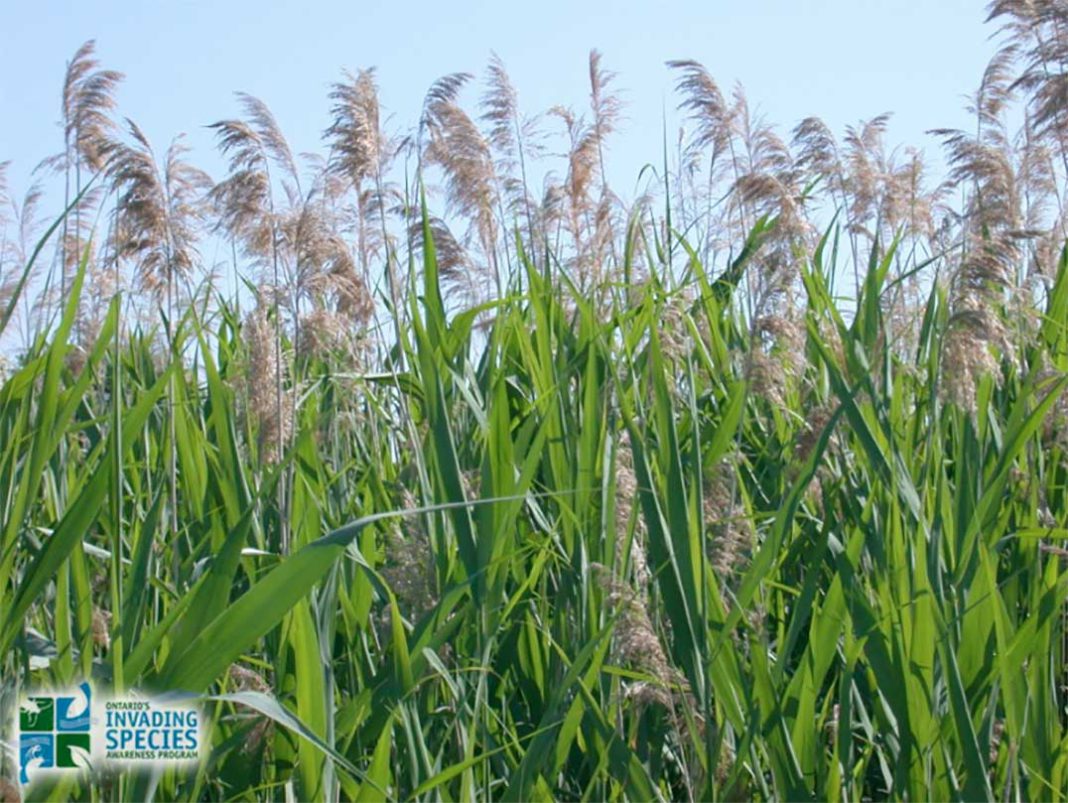Help stop the spread
MANITOULIN—Hunters, ATV riders and people out in the bush at this time of year are being asked to watch out for invasive phragmites. This huge, foreign grass is aggressively spreading on Manitoulin’s shores and beaches as well as in wetlands and ditches, and you can help stop it.
Judith Jones, coordinator for the Manitoulin Phragmites Project, told The Expositor this week that reports from the public are still needed even during the winter. “There are many places we don’t see from roads, and we need to know where these stands are so we can plan to get them under control next summer,” she said.
“Phragmites (“frag-MITE-eez”) may grow to be more than 10 feet tall,” continued Ms. Jones. “It has very broad leaves and a hard, durable stem that is difficult to crush between thumb and forefinger. This grass forms patches so dense that turtles can’t crawl through them, people can’t climb through them, and eventually nothing else is able to grow in them. Stands of phragmites in shallow water destroy fish spawning habitat and water fowl nesting areas, and can make it so people can no longer use the beach or see the water from their camp.”

photo by Matthew Scott
Ms. Jones explained that phragmites is mainly spread from vehicles—ATVs, 4X4 trucks and larger machinery. Small pieces of the grass that get stuck to the machine and then fall off in random locations. All pieces of the plant can sprout and establish new patches.
“It is of critical importance that people do not drive through phragmites, and everyone should clean down their bikes or machines each day before heading out,” she added. “If any pieces fall off in your yard or driveway it is not likely they will be able grow, but if by chance they do—you’ll see it and can deal with it.”
To clean an ATV when temperatures are above freezing, a quick spray-down with a garden hose is recommended, directing the water especially to the screens, springs and insides of the wheels where mud builds up. If temperatures are below freezing, dry-brushing the underside of the machine with a scrub-brush or a broom can be done instead to remove mud and plant material. For larger tracked machinery such as backhoes and bulldozers, the mud and plant material that gets stuck in the tracks and pinch points should be cleaned off in the yard with a pressure washer before putting the machine on a float or leaving for the job site. “A ten minute clean-down in the morning can prevent thousands of dollars in phragmites clean-up in the future,” Ms. Jones noted.
The Manitoulin Phragmites Project was formed in 2016 to address the serious problems of this invasive species. The group hosted Manitoulin Phragmites Week in July last summer with demonstrations on how to get rid of phragmites and work bees where the public helped out with control. Funding for the Project will continue through 2018 and 2019. The goal of the project is to knock phragmites down to a low level which can be kept under control with moderate annual maintenance and to educate the Manitoulin community on what to do about phragmites in their own areas.
Stands of phragmites can be reported to the Manitoulin Phragmites Project through their Facebook page Manitoulin Phragmites Project or by email to manitoulinphrag@yahoo.com or by phoning (705) 859-1027. More information on how to identify Phragmites and what to do about it can be found in the project’s information pamphlet available from their Facebook page and at most of the Island’s municipal or town offices.




